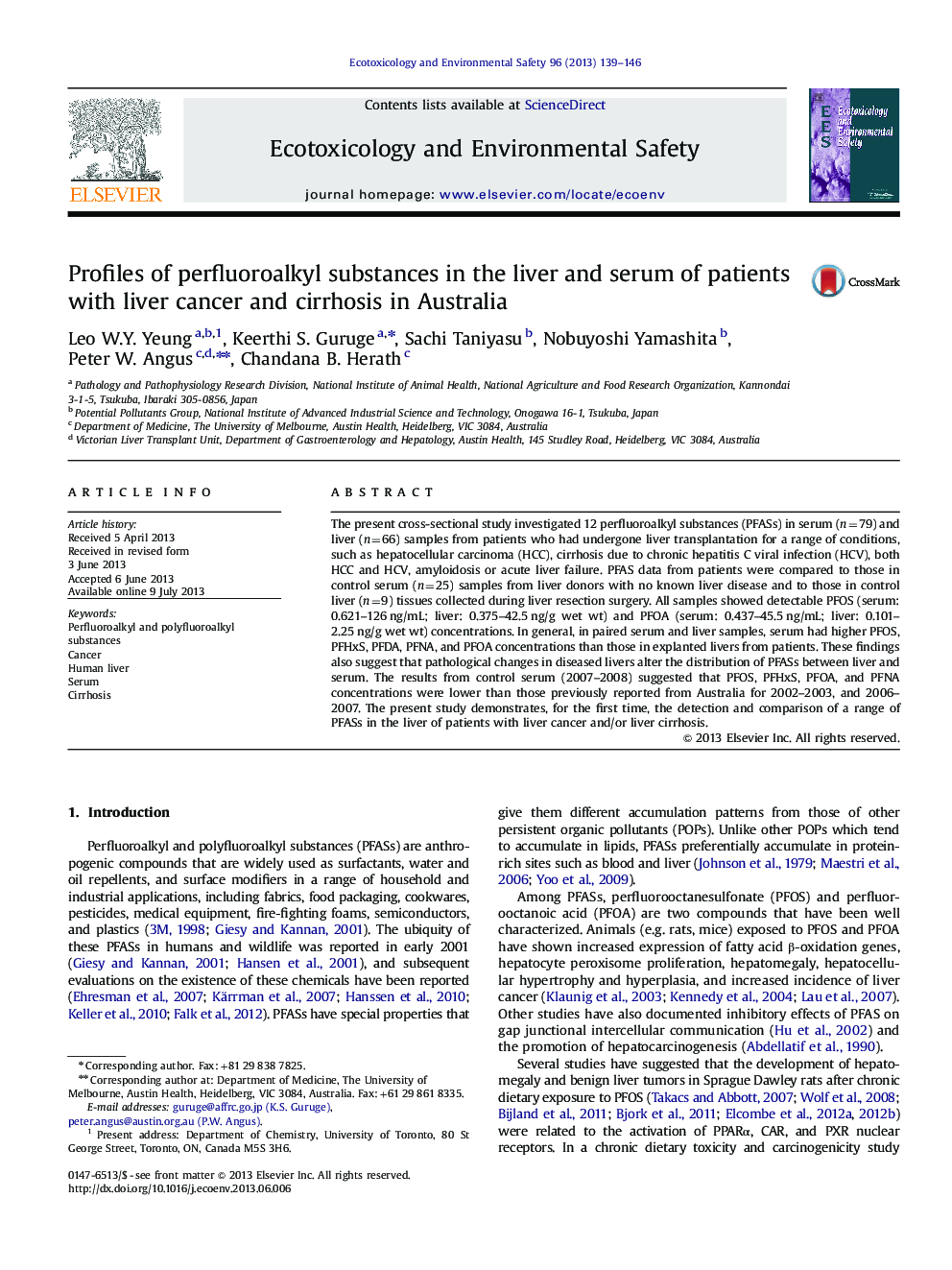| Article ID | Journal | Published Year | Pages | File Type |
|---|---|---|---|---|
| 6312351 | Ecotoxicology and Environmental Safety | 2013 | 8 Pages |
â¢We analyzed 12 PFASs in serum as well as in livers explanted from patients.â¢PFOS and PFOA were detected in all samples.â¢Serum had higher PFOS, PFHxS, PFDA, PFNA, and PFOA concentrations than those in explanted livers.â¢Pathological changes in the diseased liver may alter the distribution of PFAS s within the liver.
The present cross-sectional study investigated 12 perfluoroalkyl substances (PFASs) in serum (n=79) and liver (n=66) samples from patients who had undergone liver transplantation for a range of conditions, such as hepatocellular carcinoma (HCC), cirrhosis due to chronic hepatitis C viral infection (HCV), both HCC and HCV, amyloidosis or acute liver failure. PFAS data from patients were compared to those in control serum (n=25) samples from liver donors with no known liver disease and to those in control liver (n=9) tissues collected during liver resection surgery. All samples showed detectable PFOS (serum: 0.621-126Â ng/mL; liver: 0.375-42.5Â ng/g wet wt) and PFOA (serum: 0.437-45.5Â ng/mL; liver: 0.101-2.25Â ng/g wet wt) concentrations. In general, in paired serum and liver samples, serum had higher PFOS, PFHxS, PFDA, PFNA, and PFOA concentrations than those in explanted livers from patients. These findings also suggest that pathological changes in diseased livers alter the distribution of PFASs between liver and serum. The results from control serum (2007-2008) suggested that PFOS, PFHxS, PFOA, and PFNA concentrations were lower than those previously reported from Australia for 2002-2003, and 2006-2007. The present study demonstrates, for the first time, the detection and comparison of a range of PFASs in the liver of patients with liver cancer and/or liver cirrhosis.
